Our vegan pasta salad combines fresh and crunchy vegetables with chewy pasta and a tangy Italian dressing.
Making it is easy, and you only need simple ingredients. The combination of textures and flavors is spot on.
You can have this for lunch, dinner, or meal prep. It’s a gorgeous dish, and it’ll make you feel great.
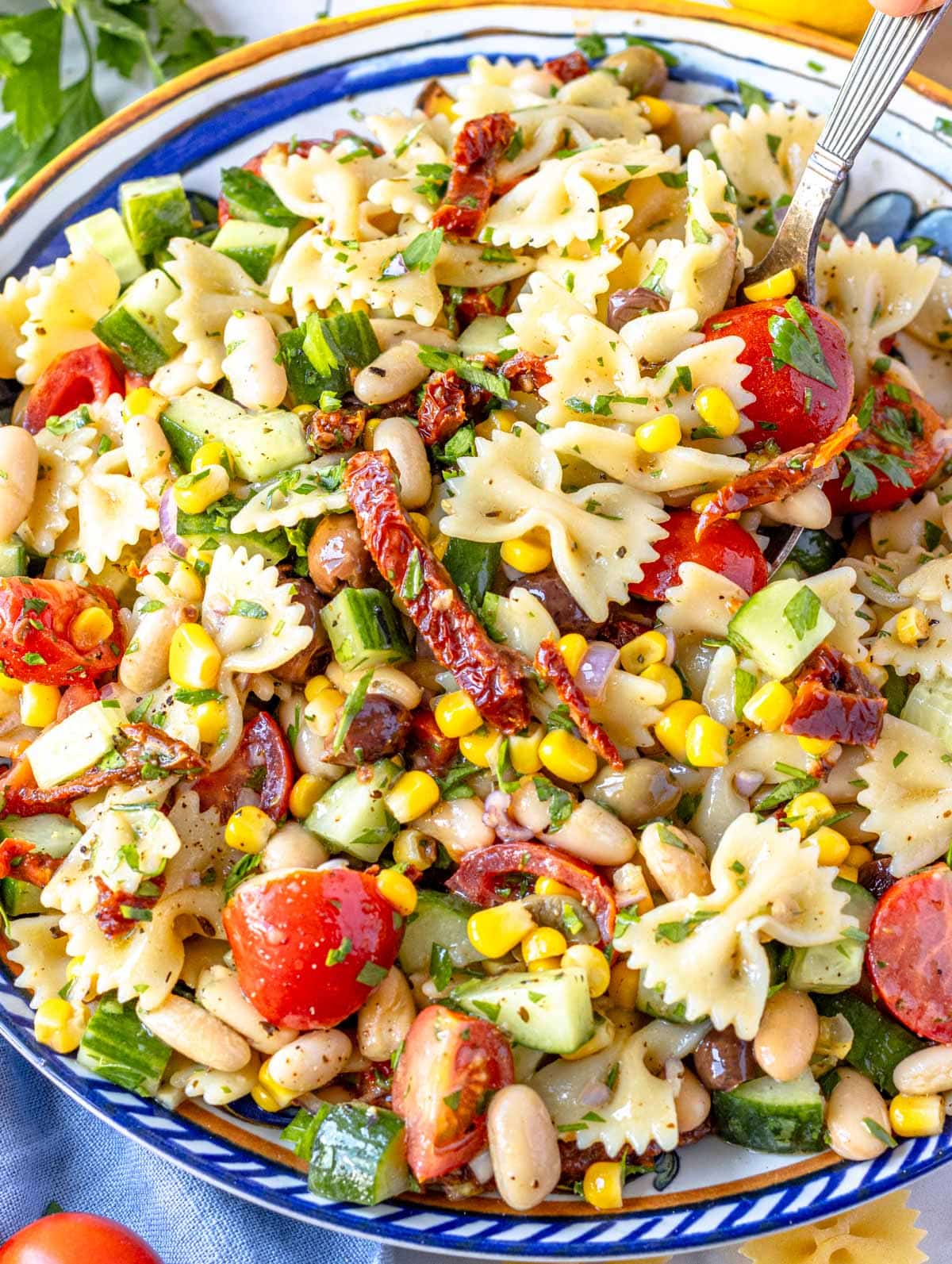
Table of Contents
Dietary Note: this recipe is suitable for a vegetarian, vegan, and gluten-free diet if made with gluten-free pasta.
Don’t have time to read the full blog post? JUMP TO RECIPE HERE!
What is vegan pasta salad?
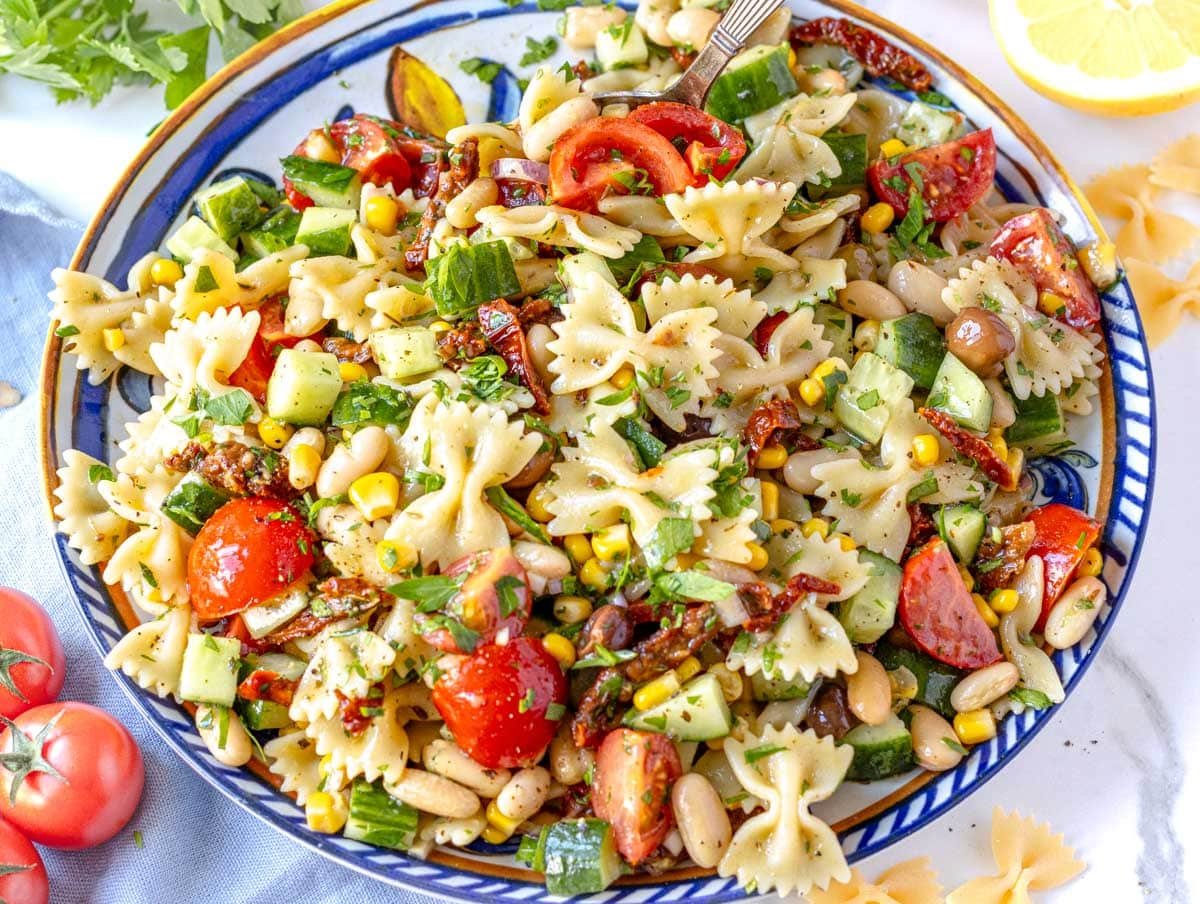
This easy vegan pasta salad is a Mediterranean-inspired recipe without meat, eggs, or cheese.
We use naturally vegan Italian pasta, fresh vegetables, legumes, herbs, and a delicious dressing.
You’ll love the texture of cold, chewy pasta with juicy, crunchy, colorful veggies and creamy cannellini beans hugged by a bold, citrusy olive oil and mustard dressing.
Like our chickpea pasta salad and black bean salad, this recipe is satisfying and nutritious thanks to the combination of fresh veggies and legumes.
The flavors are inspired by our Mediterranean salad, couscous salad, and orzo salad, which are made with similar ingredients.
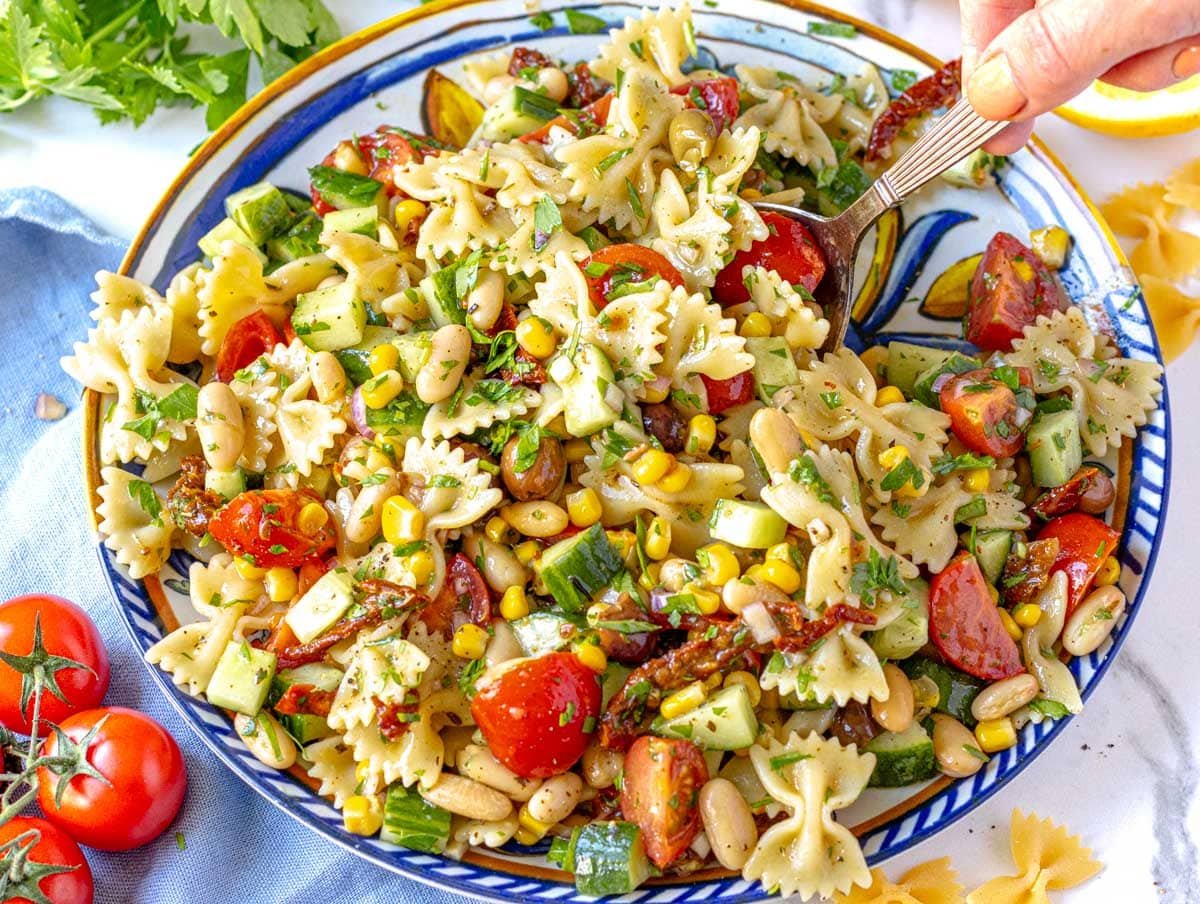
For a creamier recipe, try our macaroni salad or creamy pasta salad.
For something with whole grains, we recommend Farro salad and barley salad.
Take this recipe as a guideline, and feel free to change it and customize it based on your preferences and dietary needs. We provide ideas for substitutions below.
Ingredients for vegan pasta salad

Quantities are in the recipe box at the bottom of the page.
Pasta
Use dry Italian pasta, not fresh pasta. Dry pasta holds up better once cooked, and it’s naturally vegan, made with hard wheat or durum wheat semolina flour.
We recommend using a short pasta type with nooks and crannies for the dressing to hide, such as bow ties (farfalle), rotini, fusilli, elbow macaroni, or penne.
If you want to use long pasta, check out our spaghetti pasta salad recipe instead.
If you are on a gluten-free diet, use your favorite gluten-free pasta. You can also use legume-based pasta, such as chickpea, pea, or lentil pasta.
White Beans
Cannellini beans are our favorite for this vegan pasta salad recipe because they are tender, slightly nutty, creamy, and absorb the flavor of the dressing.
You can use canned beans or dried white beans. Here’s our guide on how to cook white beans, should you need it.
Substitute other white bean varieties or legumes such as chickpeas, lentils, green beans, or peas for cannellini.
Cherry Tomatoes
You can use any small tomato.
We like cherry tomatoes, small vine tomatoes, and grape tomatoes because they are sweet and crunchy.
Substitute red pepper for tomatoes.
Sun-dried tomatoes
Sun-dried tomatoes preserved in oil (drained from their oil before use) add a bold, savory flavor that makes this recipe pop.
Substitute marinated artichoke hears for sun-dried tomatoes.
Corn
We use canned or frozen whole-kernel corn. It adds color, crunch, and sweetness to the salad.
Substitute yellow bell pepper for corn.
Olives
Olives add a salty, umami-rich taste. Make sure you get pitted olives or remove the pit before adding them to the salad.
You can use Kalamata olives, Taggiasche Olives, or generic black or green olives in brine or oil.
Drain the salted water or the oil away before tossing the olives into the salad.
Substitute marinated artichoke hearts, sun-dried tomatoes, or capers for olives.
Cucumber
You can use American, English, Persian, and Kirby cucumber. Cucumber adds crunch and freshness to the salad.
Substitute celery or diced zucchini for cucumber.
Red onion
Red onions are the perfect flavor match for white beans and corn.
I recommend using a mild red onion and slicing it thinly for the best results.
Substitute shallots or spring onions for red onions.
Fresh herbs
We use fresh flat-leaf parsley and fresh basil.
Other herbs for this pasta salad are cilantro (fresh coriander), dill, chives, and mint.
Just use the ones you have at hand. Be generous. Fresh herbs add a ton of freshness and flavor.
Dressing
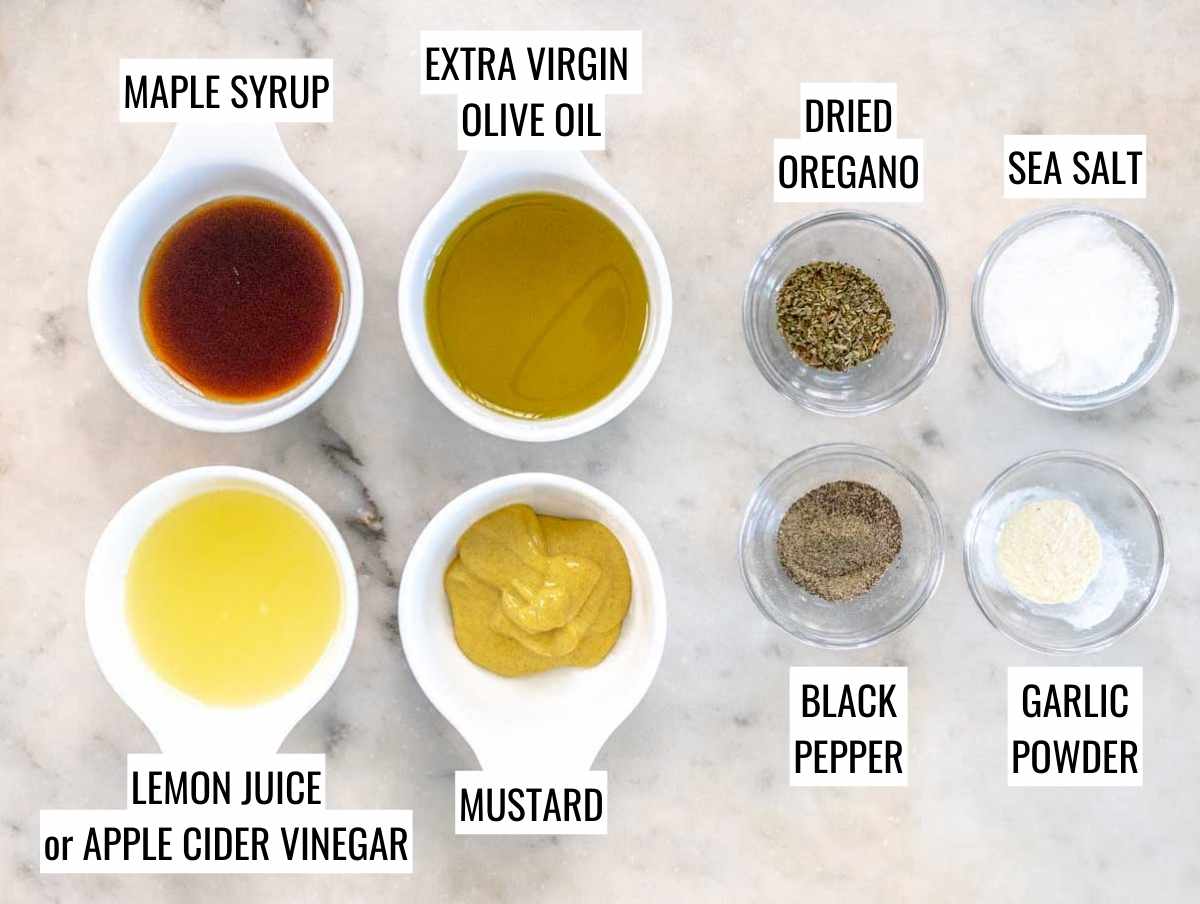
We recommend a simple Italian dressing with:
- Extra virgin olive oil: substitute regular olive oil.
- Fresh lemon juice: substitute apple cider vinegar or red wine vinegar.
- Maple syrup: substitute honey, agave syrup, date syrup or sugar.
- American mustard: substitute Dijon mustard.
- Dried oregano: substitute Italian seasoning.
- Garlic powder: substitute freshly grated garlic.
- Sea salt: substitute kosher salt.
- Black pepper: substitute red pepper flakes.
Grated lemon zest is optional; it adds a refreshing citrusy aroma.
If you want a creamier dressing, we recommend checking out our creamy pasta salad recipe with vegan mayo.
Tip: You can enrich this recipe with non-dairy feta cheese or nuts, such as toasted walnuts, almonds, or pine nuts.
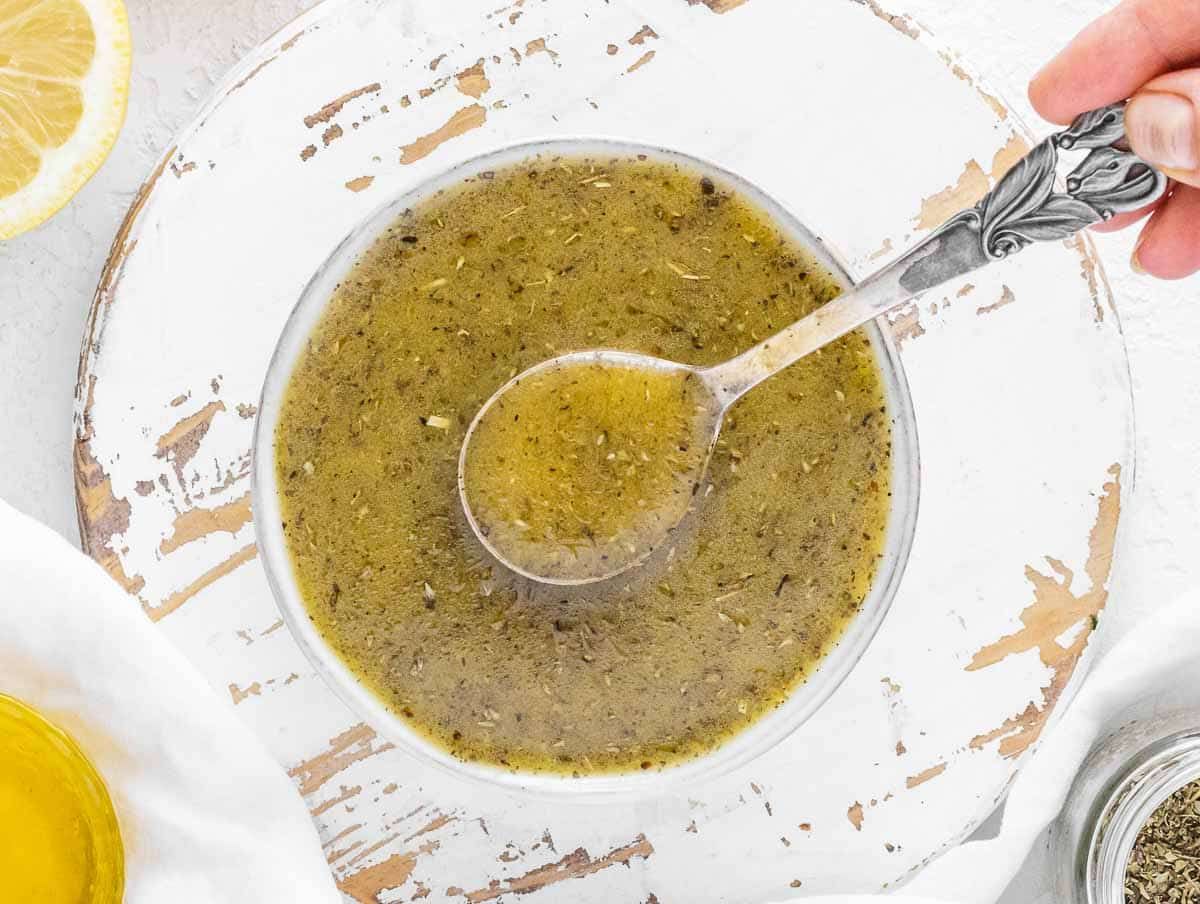
How to make vegan pasta salad
US cups + grams measurements in the recipe box at the bottom of the page.
1. Cook the pasta
Cook pasta in a large pot of salted boiling water as per package instructions.
Drain the pasta and rinse it under cold water for 10 seconds to avoid overcooking.
Transfer the cooked pasta to a large mixing bowl, drizzle with a few drops of olive oil, and mix well. The oil prevents the pasta from sticking while you prep the veggies.
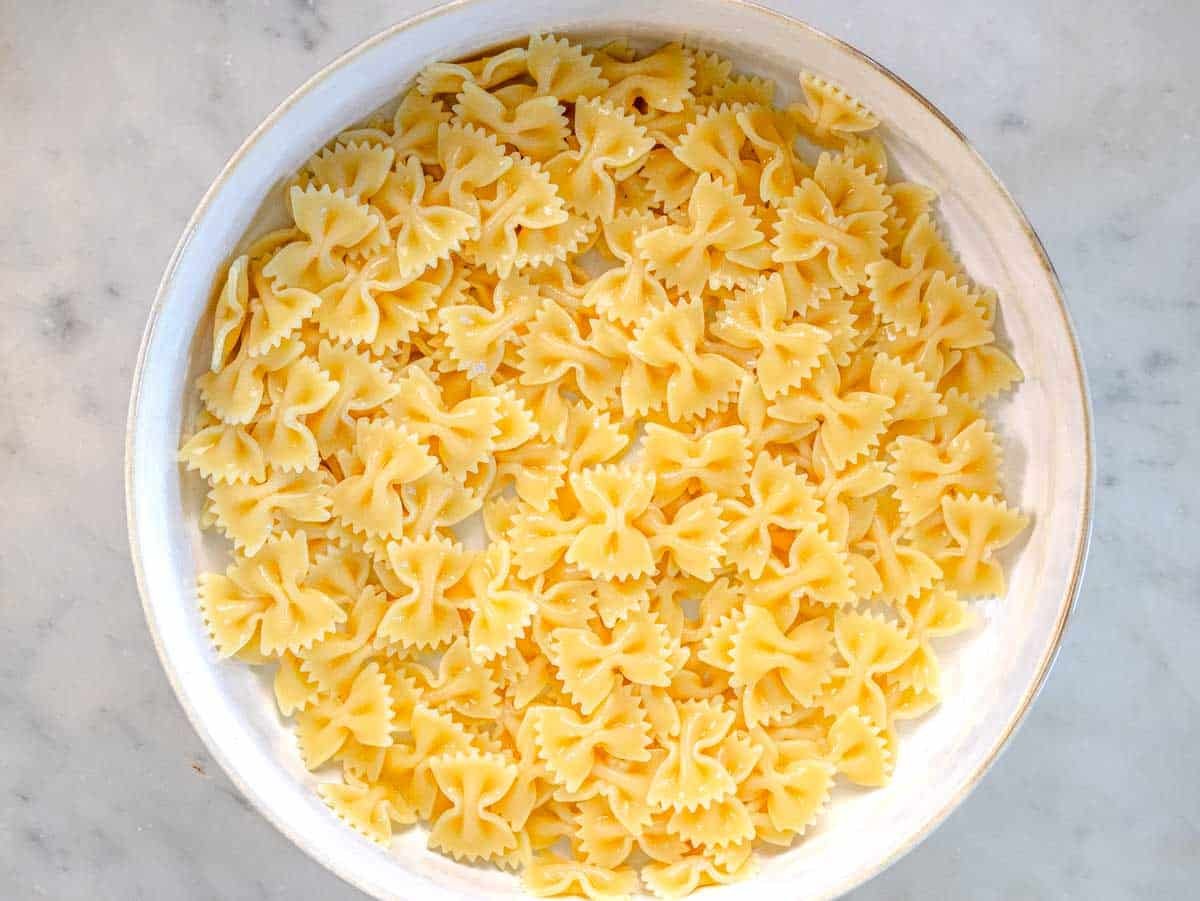
2. Chop the vegetables
While the pasta cooks, you can chop the vegetables.
Cut tomatoes in half or quarters. Cut olives in half. Drain the canned corn. Drain and rinse the white beans. Chop the cucumber. Thinly slice the red onion. Finely chop the fresh parsley and basil.
Add all chopped veggies to the bowl with the pasta, then make the dressing.
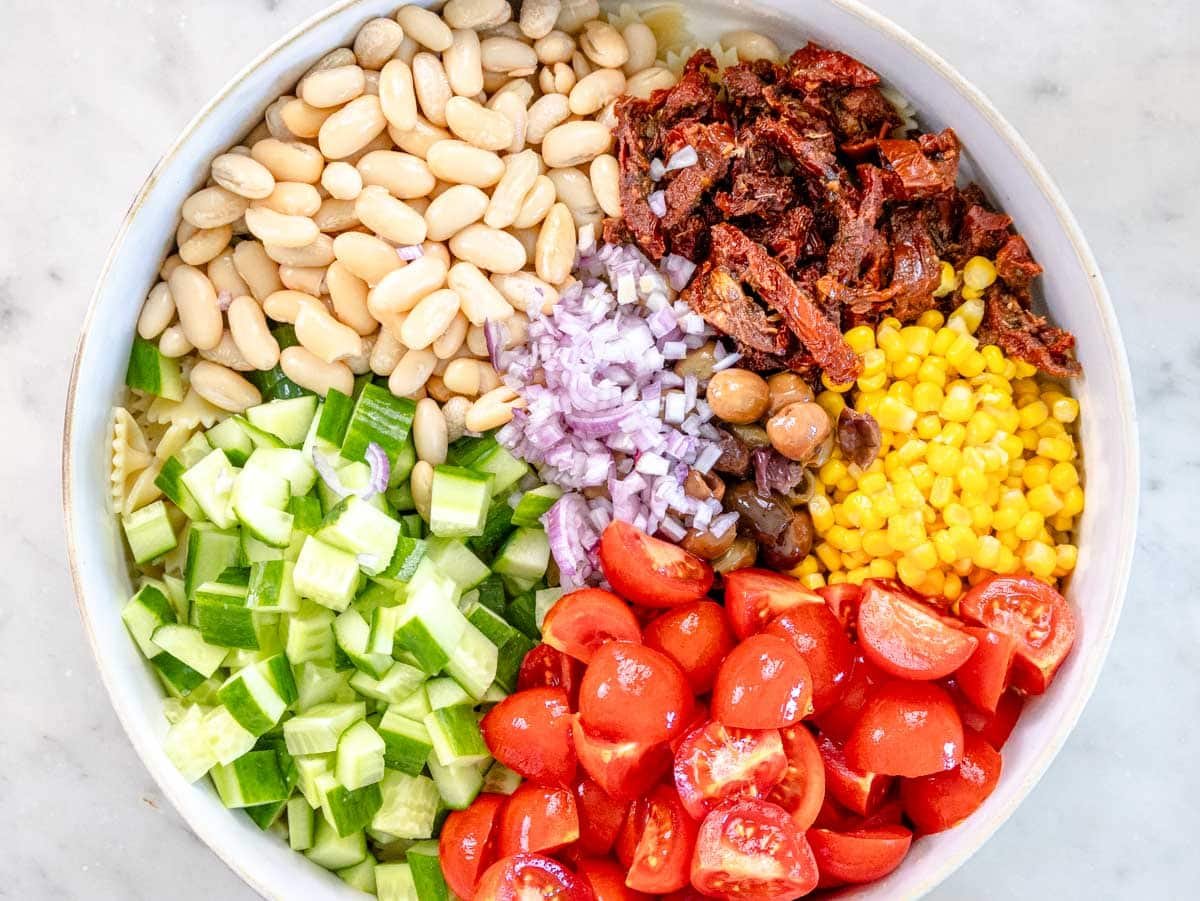
3. Make the dressing
To a small bowl, add extra virgin olive oil, lemon juice, maple syrup, mustard, dried oregano, garlic powder, salt, and black pepper.
Optionally, you can add in some grated lemon zest.
Whisk well until the ingredients are emulsified (i.e., the vinegar and the oil become one).
Alternatively, add all ingredients to a small mason jar, close it, and shake well.
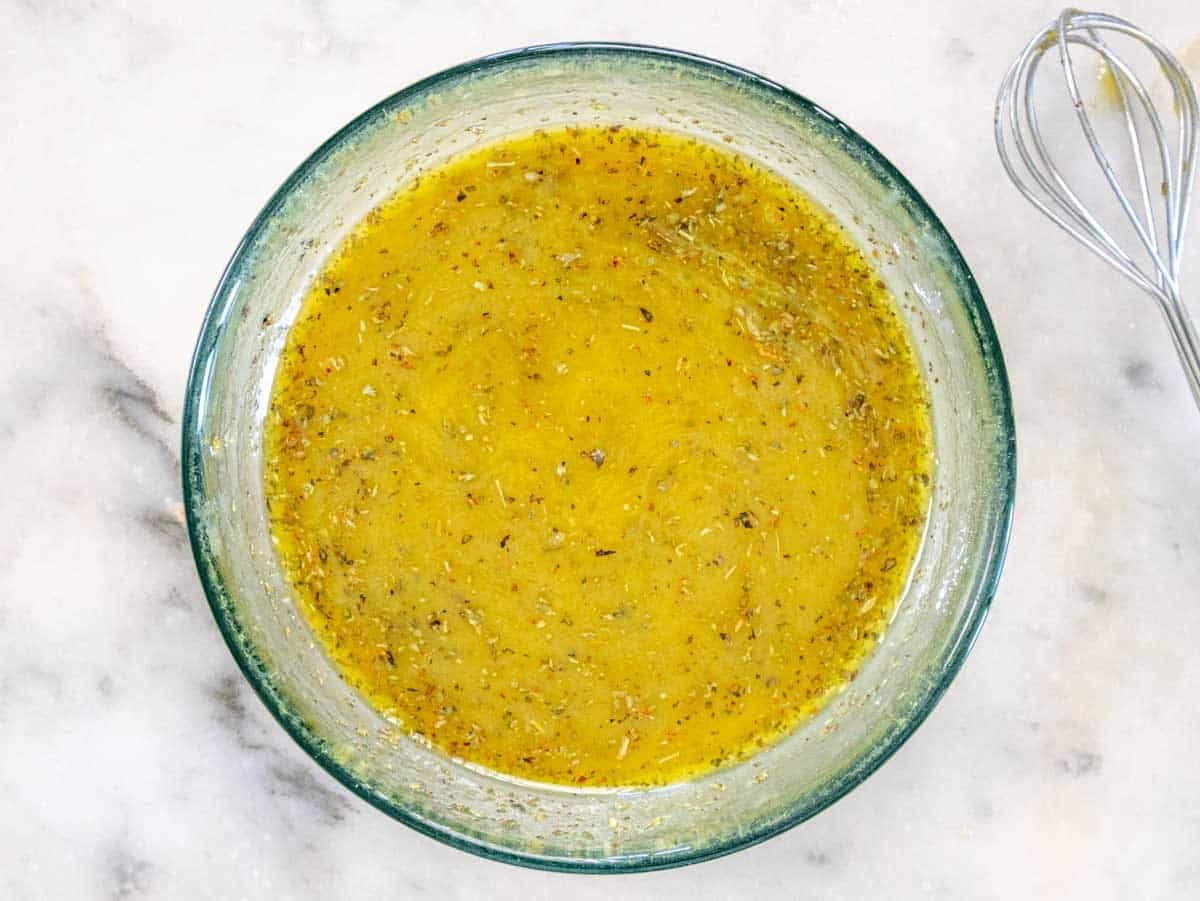
4. Mix the salad
Pour the dressing onto the other ingredients and toss well.
Taste and adjust for salt before serving.
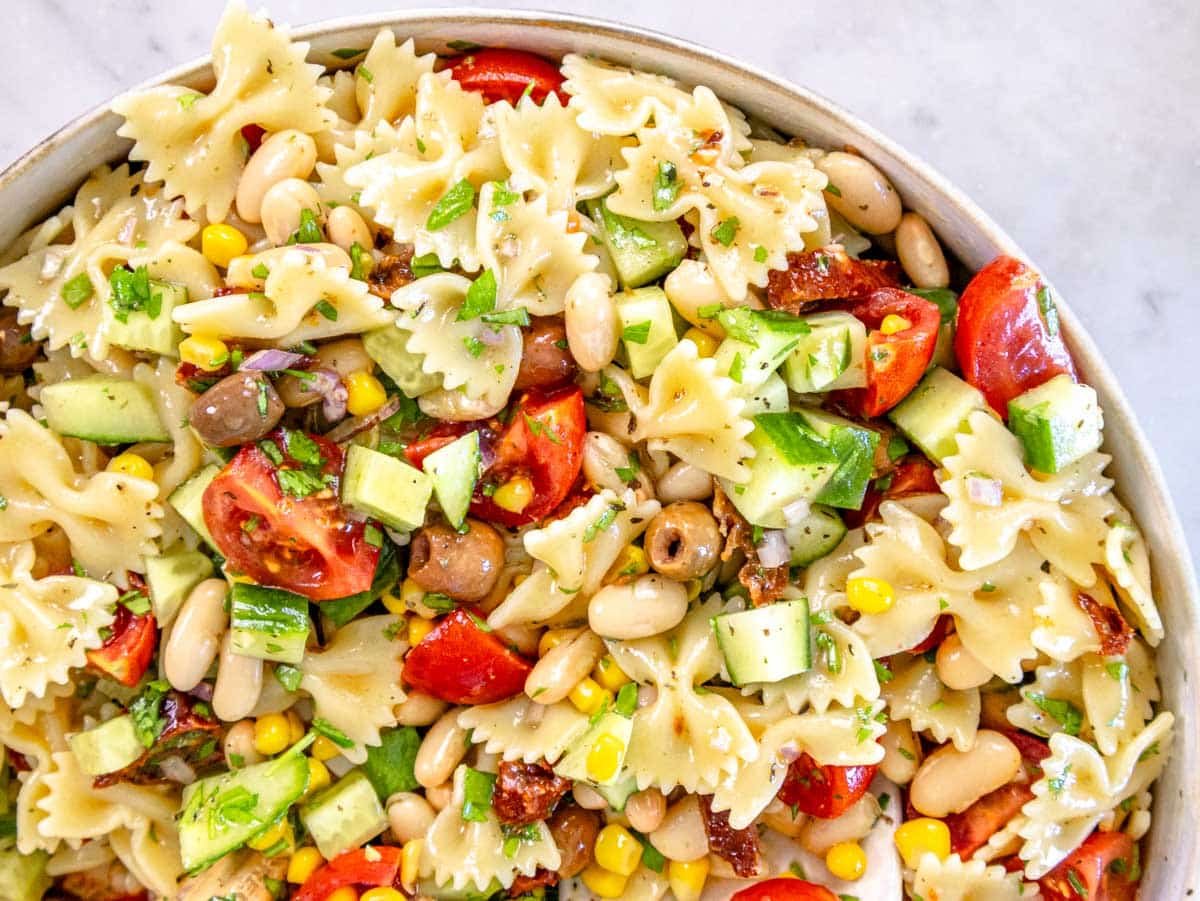
You can now serve the pasta salad or store it in the refrigerator for up to 3 days.
Tip: Vegan pasta salad gets more flavorful if you let it sit for 30 minutes as the ingredients and the dressing have time to meld.
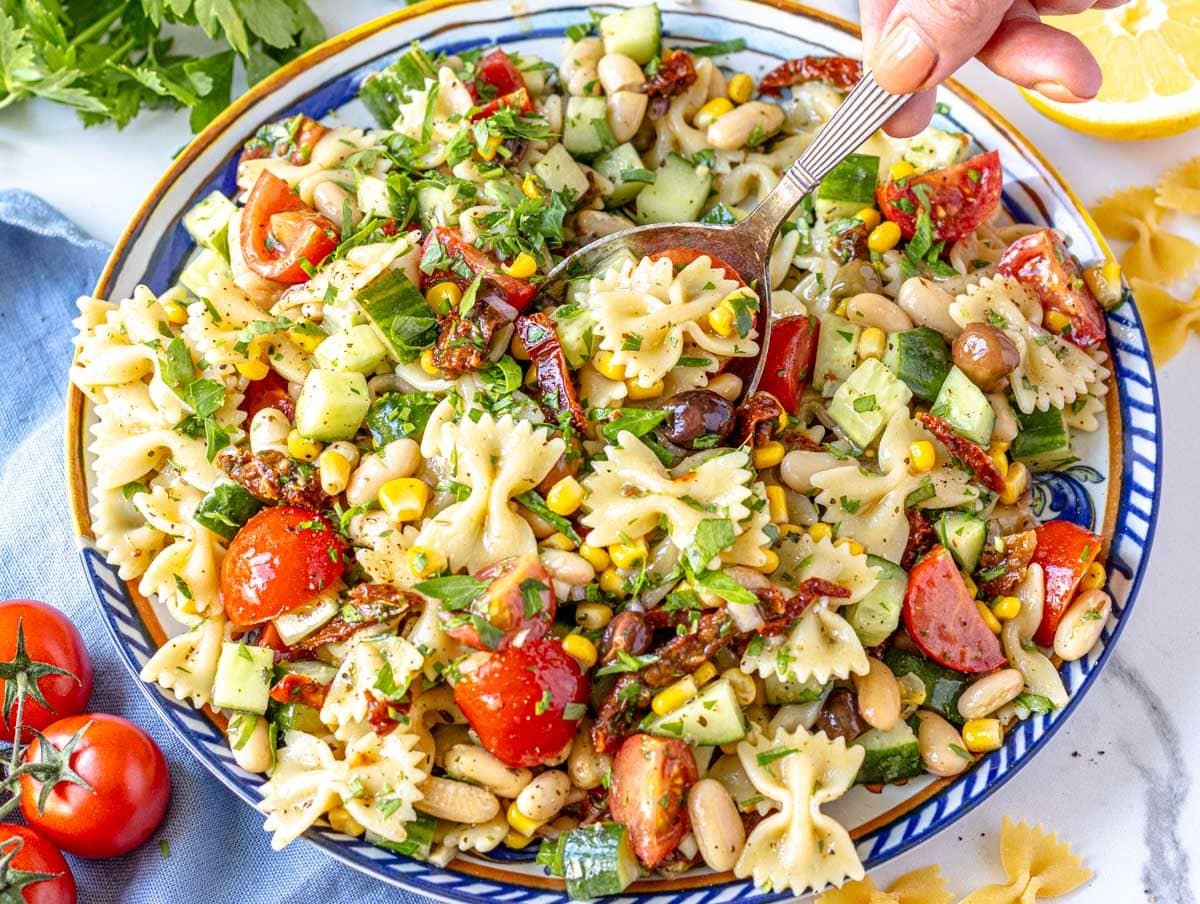
Serving suggestions
You can serve vegan pasta salad as a main dish for a quick lunch or a healthy dinner.
You can pair it with flavorful vegetables or add more protein with one of our delicious tofu recipes. We recommend:
Questions
You can make gluten-free pasta salad by using any gluten-free pasta.
Your pasta salad is bland for two reasons:
1) you did not add salt to the pasta cooking water.
2) the dressing is not tasty/salty enough.
Pasta salad requires more condiments/salt than warm pasta because it is eaten cold, often from the fridge, and the cold temperature reduces the dish’s flavor.
To fix a bland pasta salad, you’ve got to add more dressing. This is especially true if you did not add salt to the pasta cooking water. Remember that the dressing for pasta salad should be bold, as the pasta’s cold temperature reduces the dish’s taste.
In some cases, if you have not added salt to the pasta cooking water, you might have to add salt directly to the pasta salad.
Pasta salad does not need to sit overnight. You can make it and eat it, or you can make it ahead and let it sit for 30 minutes to increase its flavor. This is enough time for the flavors to come together.
According to international food safety standards (HACCP), food left at room temperature for more than 2 hours should not be consumed. This also applies to pasta salads.
Storage
Make ahead: you can make this vegan pasta salad up to 3 days in advance.
If you do so, we recommend doubling the dressing. Add half when you make the salad and the other half shortly before the pasta salad is served.
We do this because the pasta will absorb most of the dressing as it sits in the fridge.
Refrigerator: store leftovers in the fridge, preferably in an airtight container, for up to 3 days.
Freezer: this recipe is not suitable for freezing.
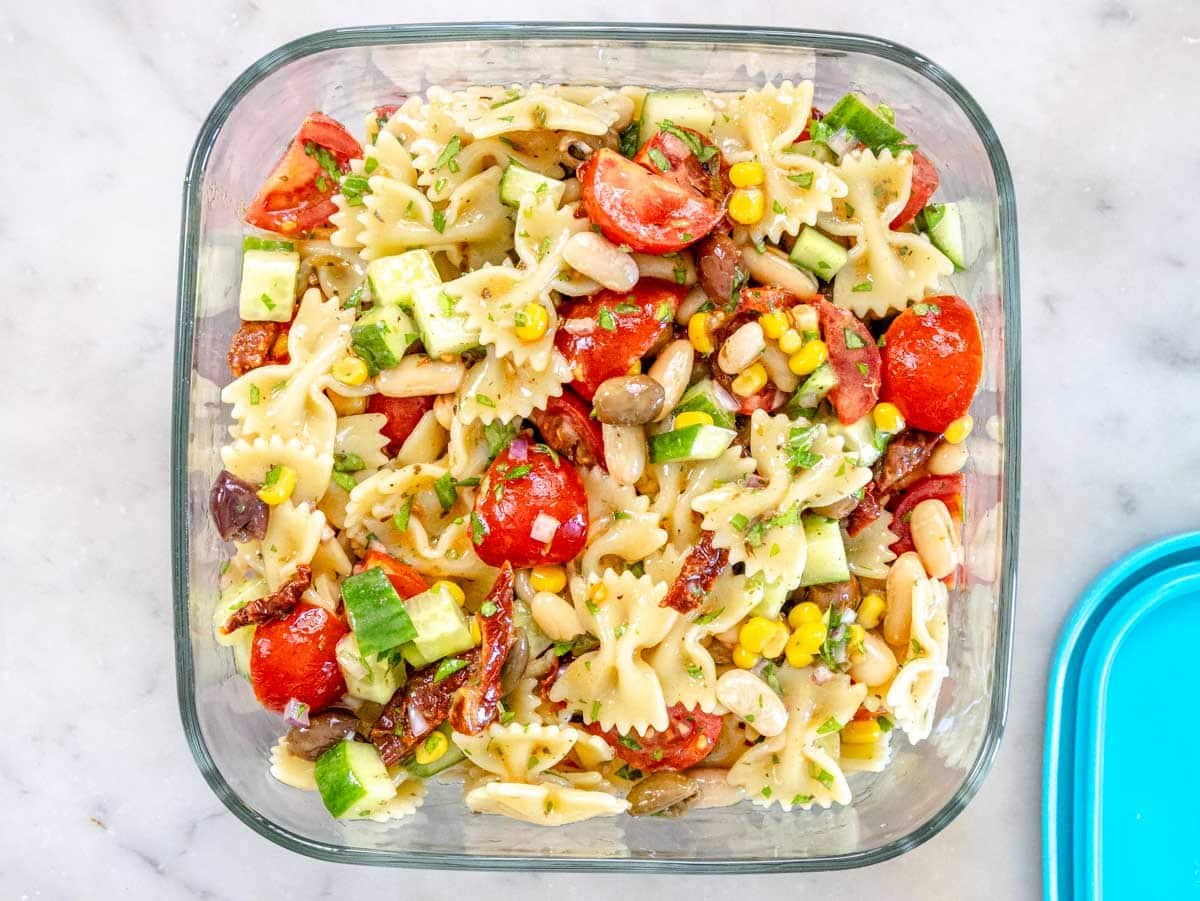
More summer salads
For more ideas, check out our compilation post with 45 best salad recipes.
30-Min Meals
Asian Noodle Salad
Salads
Broccoli Salad
Salads
Macaroni Salad
Collections
45 Best Salad Recipes
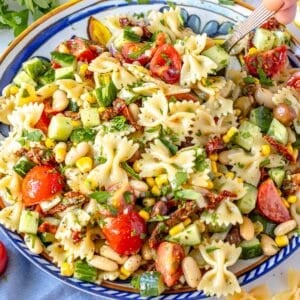
Vegan Pasta Salad
Ingredients
Pasta Salad
- 8 ounces farfalle pasta cooked in 2 quarts/8 cups/2 Liters water and 1 tablespoon/15 grams sea salt.
- 1 can (15-ounces) white beans drained and rinsed
- 2 cups cherry tomatoes quartered
- 1 heaping cup cucumber diced
- ½ cup olives
- ½ packed cup sun-dried tomatoes preserved in oil, drained from the oil and chopped
- ½ cup corn canned or frozen. If frozen, boil it first.
- 1 shallot finely chopped
- 3 tablespoons parsley finely chopped
Dressing
- 3 tablespoons extra virgin olive oil
- 3 tablespoons lemon juice + grated zest of ½ lemon, optional
- 2 tablespoons mustard American or Dijon
- 1½ tablespoons maple syrup
- 1 teaspoon dried oregano
- ½ teaspoon garlic powder
- 1 teaspoon salt more or less to taste
- ⅛ teaspoon black pepper
Instructions
- COOK PASTA: Cook 8 ounces farfalle pasta in a large pot with salted boiling water as per package instructions.Drain and rinse under cold water for 10 seconds.Transfer the pasta to a large bowl, add 1 teaspoon of olive oil and stir.
- CHOP VEGGIES: To the same bowl, add 1 can (15-ounces) white beans, ½ cup corn, 2 cups cherry tomatoes (quartered), 1 heaping cup cucumber (diced), ½ cup olives, ½ packed cup sun-dried tomatoes, 1 shallot, 3 tablespoons parsley (all chopped).
- MAKE DRESSING: To a small bowl, add 3 tablespoons extra virgin olive oil, 3 tablespoons lemon juice, 2 tablespoons mustard, 1½ tablespoons maple syrup, 1 teaspoon dried oregano, ½ teaspoon garlic powder, 1 teaspoon salt, and ⅛ teaspoon black pepper.Whisk until combined.
- MIX SALAD: Pour the dressing onto the pasta and toss well. Taste and adjust for salt before serving.
Notes
Nutrition
If you like this vegan pasta salad, you might also enjoy:
Collections
40 Easy Pasta Recipes
Collections
20 Bean Recipes (easy meals)
Collections
35 Best Vegetarian Lunch Ideas
Collections
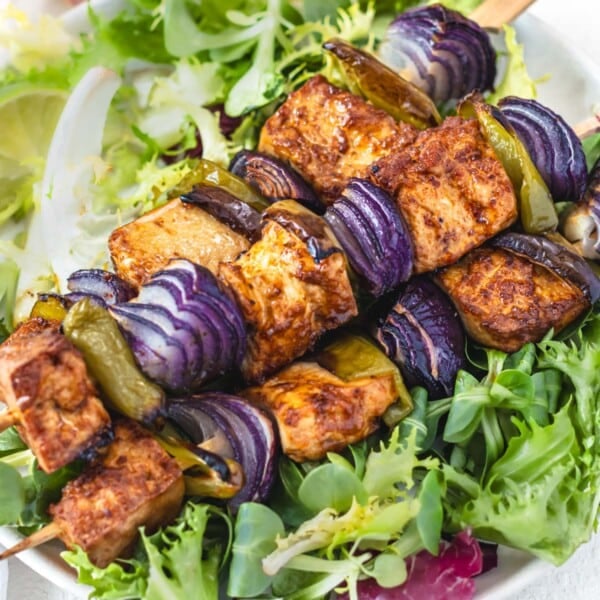
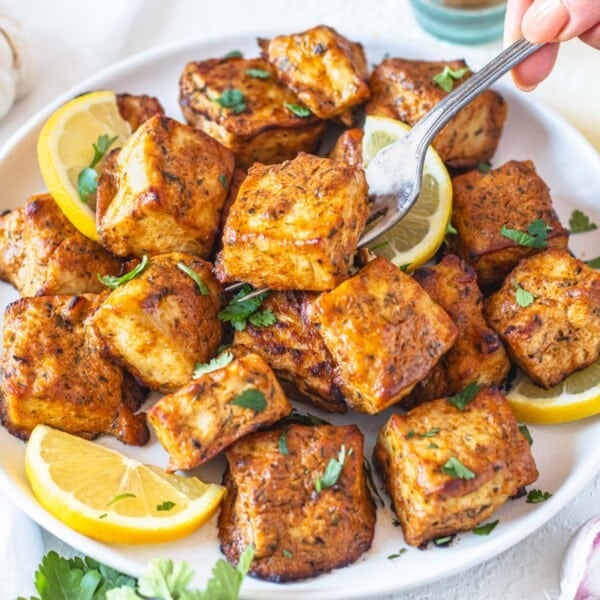
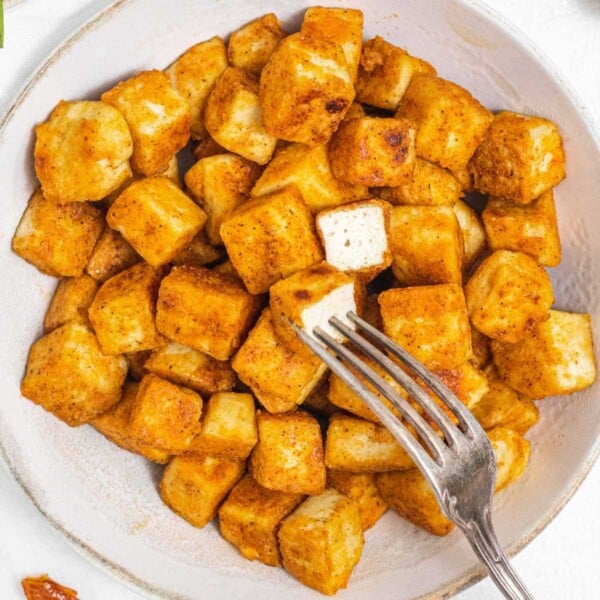
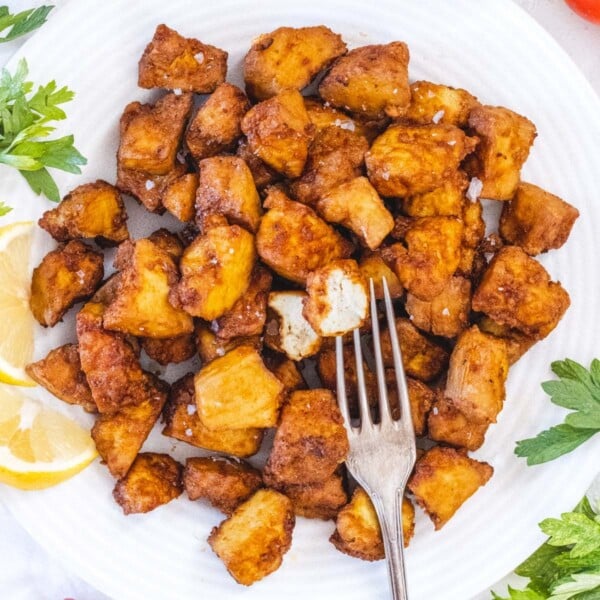
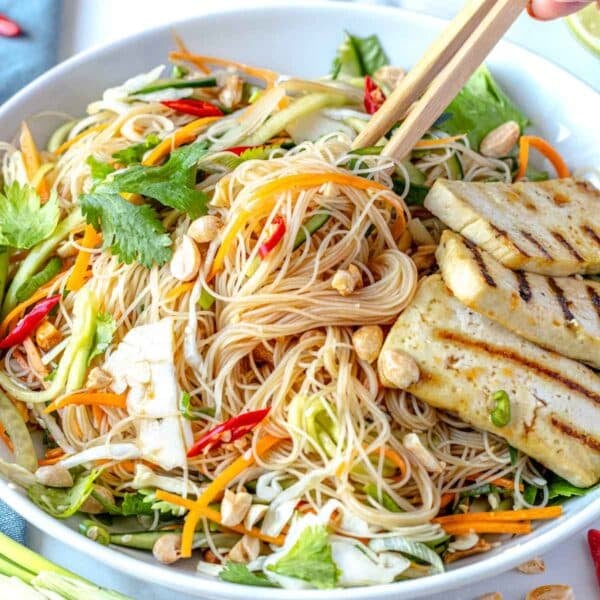
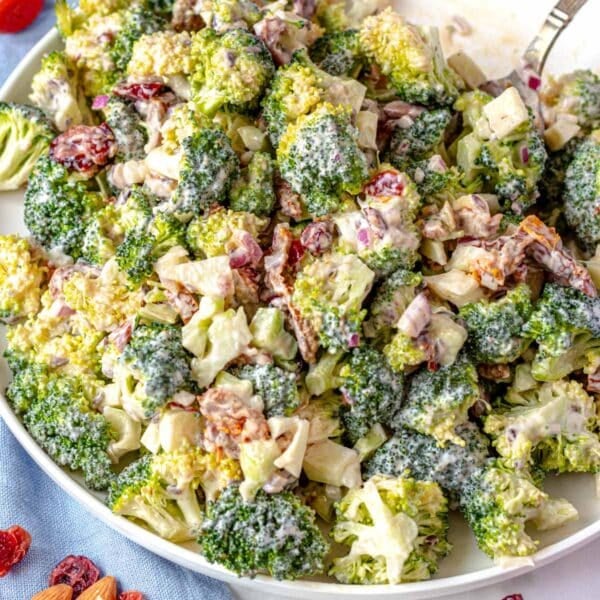
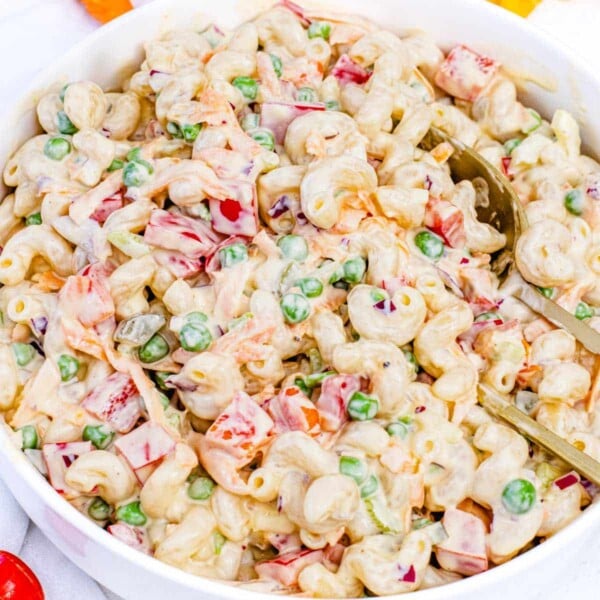
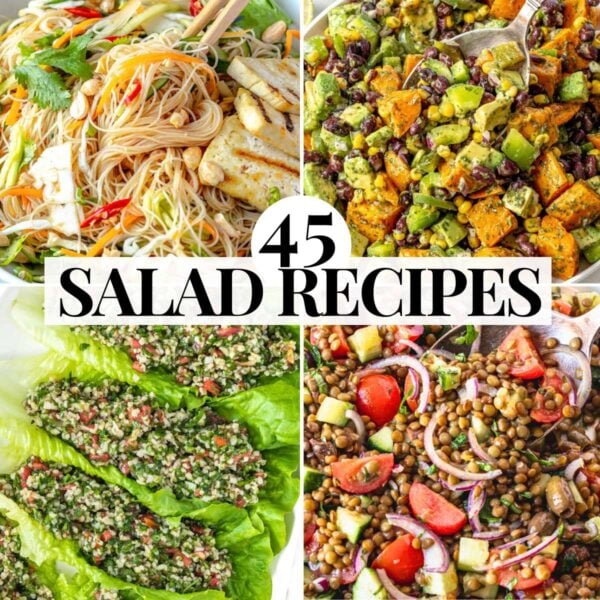
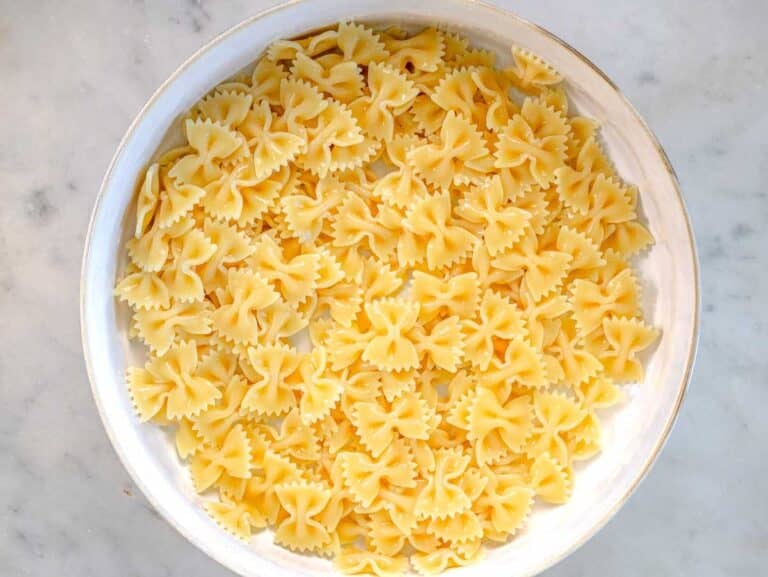
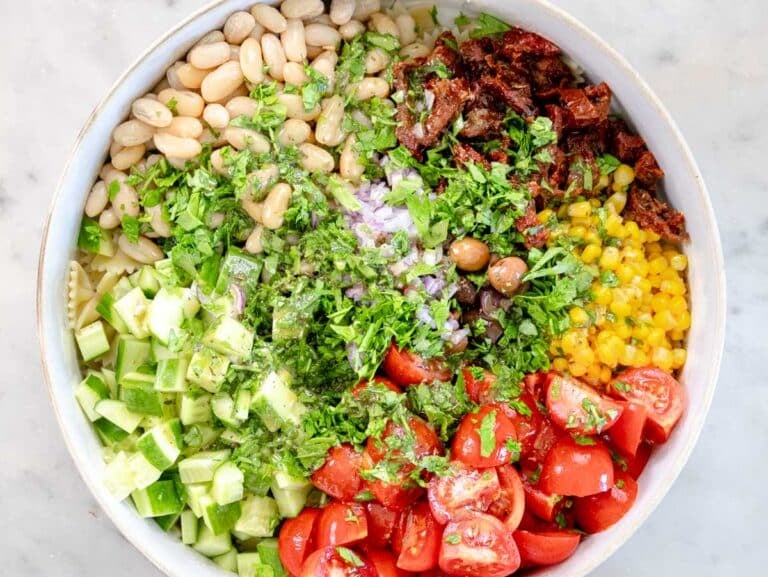
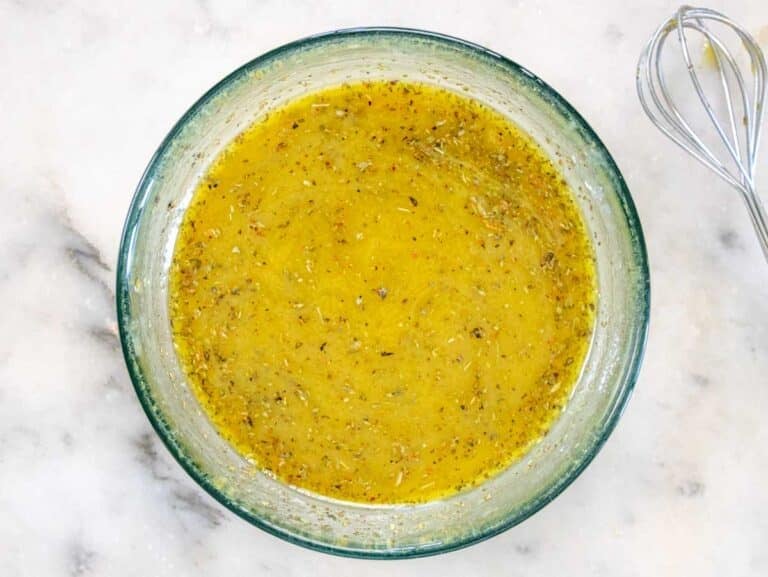
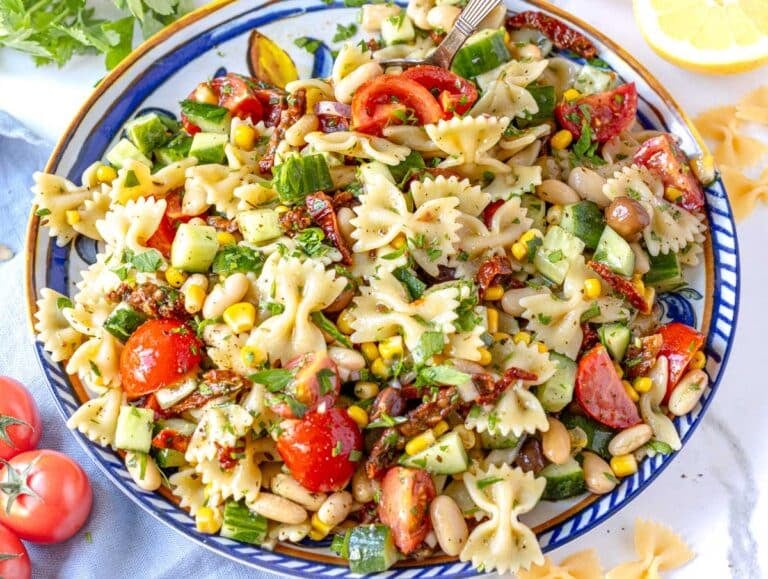
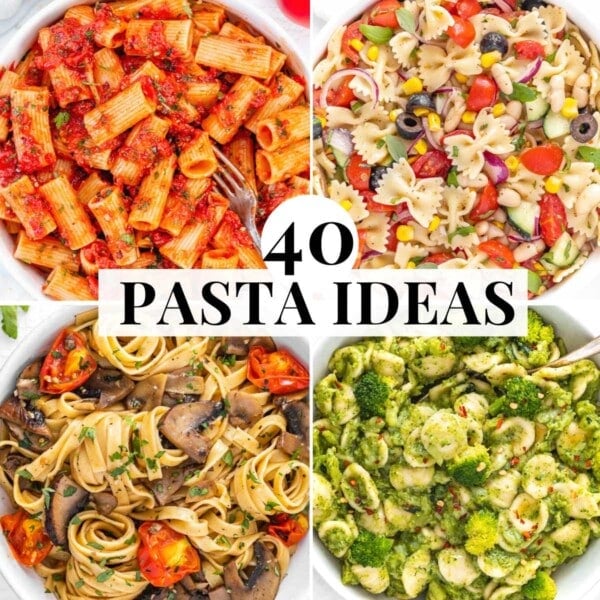
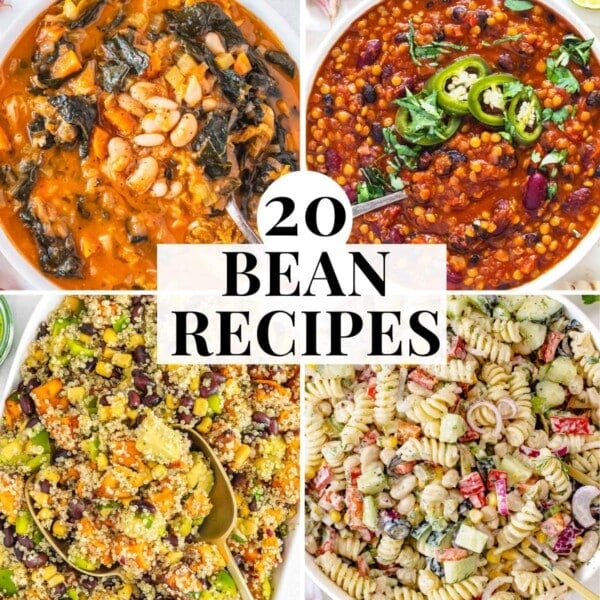
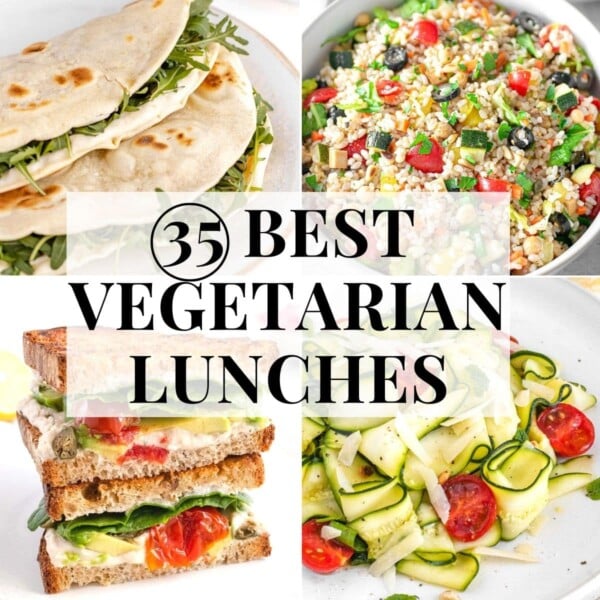
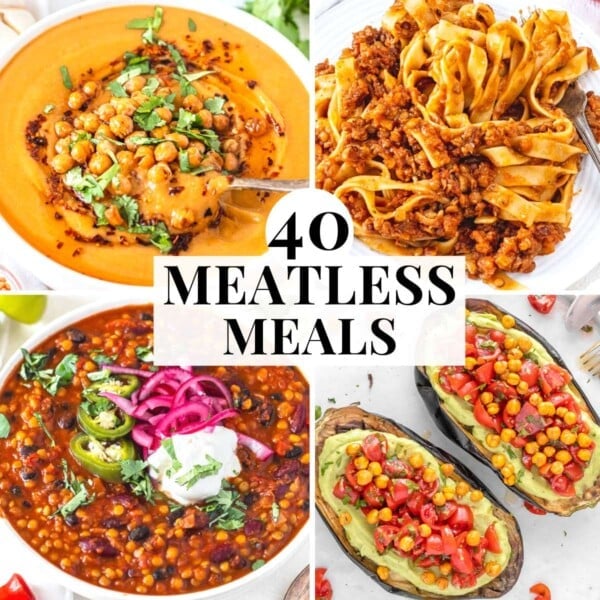

Another tasty and beautiful salad! I’m not vegan but because of y’all we are eating healthier. Thank you for your hard work!
So happy to hear, Casey! Thank you so much for your kind comment 🎉
I found this recipe when I had vegan guests and love it so much I continue to make it regularly for my husband and me. Delicious!
Fantastic, Erin! I’m delighted that everyone enjoyed the pasta salad – great news 🎉
Thank you for leaving a comment and review here. Kindest, Louise
Thank you!
Hi – love so many of your recipes and I look forward to making this one for us! But I have a question – what can I substitute for tomatoes as I have a friend who cannot eat tomatoes at the moment? TIA
Hi Pam, oh I’m so happy that you like our recipes 🎉
So, you can substitute red pepper for tomatoes – I hope that works for you and her. Have a great Friday!
Kindest, Louise
Eager to make this. Thanks for the sub suggestions. I find that rice vinegar enhances flavors. Since I am plant-based, I do not add the oil. I used crusty focaccia for the panzanella. Winner.
What a perfect salad for the family dinner on Sunday. Thank you!
Our pleasure, Judy – I’m delighted that you feel like making the pasta salad 🙂
Enjoy you family lunch. Kindest, Louise
I am having vegan friends for lunch and the pasta salad looks delicious. Any suggestions for what to pair would be nice. Thank you
Delores
Hi Delores,
Sounds like wonderful lunch plans! If you jump to the section in the article with “serving suggestions”: https://theplantbasedschool.com/vegan-pasta-salad/#h-serving-suggestions you will see our favorite protein pairings, such as air fryer tofu and roasted tofu 🙂
If you’re looking for vegetable inspiration, I recommend this article: https://theplantbasedschool.com/best-vegetable-sides/ with roasted, grilled, marinated, braised veggies that will hopefully inspire you for your lunch plans.
I hope that helps. Enjoy 🎉
Kindest, Louise
Question..how can you make this with no/less fat gems??
Hi Linda, to make this recipe with less fat you can take away the avocado and replace it with an oven roasted zucchini. Just dice the zucchini, put it on a baking tray with parchment paper and bake it for 30 minutes at 200˚C / 380˚F.
If you want even less fat, then you can also remove the olives. Replace them with some capers or chopped sun dried tomatoes to keep the umami taste.
If you want even less fat, then you can also reduce the amount of olive oil by cutting it in half.
Hope this helps! 🙂
Great!